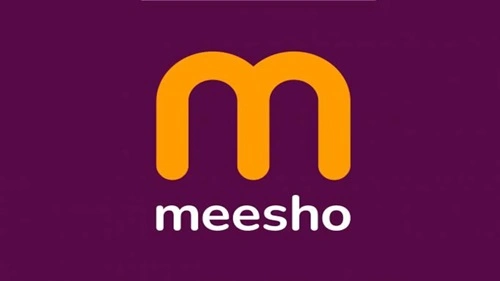Meesho, short for “Meri Shop” (My Shop), is an Indian social commerce platform that has revolutionized online retail by empowering small businesses, resellers, and entrepreneurs. Founded in 2015 by Vidit Aatrey and Sanjeev Barnwal, Meesho has grown into one of India’s most prominent e-commerce platforms, focusing on Tier 2, Tier 3, and rural markets. By enabling individuals to sell products through social media channels like WhatsApp, Facebook, and Instagram, Meesho has created a unique and scalable business model. This article delves into how Meesho operates and generates revenue.
Overview of Meesho’s Business Model

Meesho operates on a social commerce model, which leverages social media platforms for product discovery, promotion, and sales. It acts as an intermediary between suppliers and resellers, providing tools and resources for resellers to market and sell products to end consumers. The key components of Meesho’s business model include:
- Resellers: Individuals, often homemakers and small entrepreneurs, who promote and sell products listed on Meesho to their social media networks.
- Suppliers: Manufacturers and wholesalers who list their products on Meesho for resellers to promote and sell.
- Customers: The end consumers who purchase products through resellers.
By focusing on the reseller-driven sales model, Meesho taps into a massive market of non-professional entrepreneurs, bridging the gap between suppliers and customers.
Revenue Streams
Meesho generates revenue through various channels, which are primarily driven by its marketplace and services.
a) Commission from Suppliers
Meesho earns its primary revenue through commission fees charged to suppliers for every product sold on the platform. When a reseller successfully promotes and sells a product, Meesho takes a percentage of the sale value as a commission. This fee typically ranges from 10% to 15%, depending on the product category and supplier agreement.
b) Logistics and Delivery Services
Meesho provides logistics and supply chain solutions to suppliers, ensuring seamless delivery to customers. The company partners with third-party logistics providers to handle warehousing, packaging, and shipping. Revenue is generated through:
- Logistics Fees: A portion of the delivery charges paid by customers.
- Handling Fees: Charges for packaging and fulfillment services.
c) Advertising and Promotions
Suppliers can promote their products on Meesho through sponsored listings and advertising campaigns. By paying for better visibility on the platform, suppliers increase their chances of reaching more resellers and customers. Meesho earns revenue by charging fees for these advertising services.
d) Value-Added Services
Meesho offers various value-added services to suppliers and resellers, such as:
- Premium Memberships: Exclusive access to analytics, market insights, and enhanced product placement.
- Training Programs: Paid training sessions for resellers to improve their marketing and sales skills.
e) Payment Gateway Charges
Meesho facilitates online transactions through its platform, earning a small percentage of each payment as a gateway processing fee. This includes COD (Cash on Delivery) and digital payment options.
f) Financial Services
Recently, Meesho has ventured into offering financial services such as:
- Microloans: Providing small loans to resellers to invest in their business.
- Credit Facilities: Offering credit solutions to suppliers for scaling their operations.
These services generate additional revenue while fostering growth within the Meesho ecosystem.
Key Cost Drivers
Running a platform like Meesho involves several cost components:
a) Logistics and Fulfillment
Partnering with third-party logistics providers for delivery, packaging, and warehousing incurs significant costs. To optimize costs, Meesho focuses on building a robust supply chain.
b) Technology and Infrastructure
Developing and maintaining a mobile app, AI-driven recommendation systems, and a secure payment gateway requires continuous investment in technology.
c) Marketing and Customer Acquisition
Meesho spends heavily on digital marketing, influencer partnerships, and reseller onboarding campaigns to expand its user base.
d) Reseller Support
To retain and empower resellers, Meesho provides training, customer support, and resources, which adds to its operational expenses.
e) Discounts and Promotions
The platform offers competitive pricing, discounts, and cashback incentives to attract customers, cutting into profit margins in the short term.
Unique Features Driving Revenue Growth
Meesho employs several strategies that differentiate it from traditional e-commerce platforms and contribute to its growth:
a) Zero Commission for Resellers
Meesho charges no commission from resellers, allowing them to set their own profit margins. This policy attracts a large pool of resellers, who are incentivized to actively promote and sell products.
b) Focus on Tier 2 and Tier 3 Markets
By targeting non-metro areas, Meesho taps into an underserved customer base. Affordable pricing and vernacular language support make the platform accessible to a wider audience.
c) Mobile-First Approach
Meesho’s app is designed for mobile users, given the high smartphone penetration in India. Its intuitive interface makes it easy for even non-tech-savvy users to operate.
d) Social Selling
The platform’s integration with WhatsApp, Facebook, and Instagram enables resellers to market products to their personal networks, reducing the need for traditional advertising.
e) Low Investment Model
For resellers, Meesho offers a zero-investment opportunity to start a business, eliminating barriers to entry.
Challenges and Opportunities
Challenges
- High Competition: Meesho faces competition from social commerce platforms like GlowRoad and Shop101, as well as traditional e-commerce giants like Amazon and Flipkart.
- Logistics Dependence: Managing logistics for Tier 2 and Tier 3 cities remains a challenge due to infrastructure gaps.
- Low Margins: High discounts and aggressive pricing strategies put pressure on profitability.
Opportunities
- Rising E-commerce Adoption: India’s growing internet penetration and digital literacy present immense growth potential for platforms like Meesho.
- International Expansion: Meesho can replicate its model in emerging markets with similar socio-economic dynamics.
- D2C Opportunities: Meesho can collaborate with Direct-to-Consumer (D2C) brands to expand its product portfolio.
- Upskilling Resellers: By offering advanced training and resources, Meesho can further empower its reseller network and boost sales.
Financial Overview
Meesho has raised substantial funding from investors like SoftBank, Facebook, and Prosus Ventures, reaching a valuation of over $4 billion (as of the latest reports). The company has shown exponential growth, with a significant share of its revenue driven by Tier 2 and Tier 3 cities. Meesho’s focus on profitability and scaling its ecosystem ensures a sustainable growth trajectory.
Conclusion
Meesho’s innovative social commerce model has disrupted India’s e-commerce landscape by democratizing entrepreneurship and making online selling accessible to millions. By focusing on affordability, empowering resellers, and leveraging social media, Meesho has created a scalable and sustainable business. As it continues to expand its product offerings, enhance its technology, and explore new markets, Meesho is well-positioned to maintain its leadership in the social commerce space.

